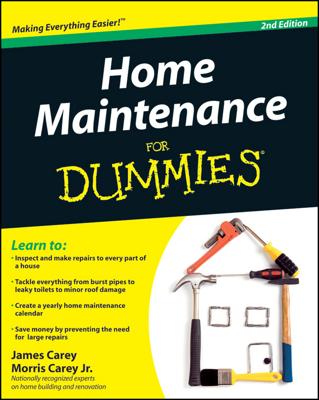It pays to have a professional, licensed heating contractor check your steam system every year. But you can perform three important maintenance tasks on your steam heating system yourself. Caring properly for your system will you save money in the long run through greater efficiency, but you'll also have peace of mind knowing that your system is operating safely.
Here are the tasks you can perform:
Check the steam gauge regularly: Make sure that it's within the normal range. If it isn't, shut the system down immediately and call for service.
Check the safety valve every month: Located on the top of the boiler, this important valve vents excess pressure if the boiler goes crazy and exceeds safe levels. When the system is hot, push down on the handle to see if steam comes out. Stand away from the outlet — the steam is boiling hot. If no steam comes out, call a serviceperson to replace the valve immediately.
Check the water level once a month: The water-level gauge has valves on each side. Open them both and make sure that the water level is in the middle, and then close the valves. If you didn't see any water, shut off the boiler, let it cool down, and then add water.
Because steam systems occasionally need water added, it's better and more convenient to have an automatic water valve added to the system. The valve monitors water levels and adds water ever so slowly to avoid damaging the boiler.
You also can do a few things to keep your radiators working well:
Make sure that every radiator slopes slightly toward the steam inlet pipe (which comes out of the wall or floor). If one doesn't, slip a 1⁄4-inch-thick rectangle of wood under the feet at the vent end. Doing so prevents those irritating knocking and clanging noises.
Check the vents to make sure that they aren't blocked. Corrosion and paint can keep the vent from venting and then air trapped in the radiator prevents steam from entering the radiator. If your vent is blocked, replace it. Your local hardware store probably carries them (yours is not the only house in the area with steam heat), and they simply screw off and on.
Check the position of the inlet valves. They should be either all the way closed or all the way open. A partially open or shut valve does nothing to regulate heat and causes knocking and clanging.
Got an inlet valve that's leaking? Chances are it's actually leaking at the capnuts (the big nuts at the vertical and horizontal connections). Luckily, a leak there can be cured with a little retightening. Get two wrenches — use one to hold the valve and the other to tighten the capnut. If the leak seems to be coming from under the valve handle, take off the valve head and tighten the topmost nut, which is called the gland nut.
If neither of those solutions fixes the leak, the valve adapter — the double-ended/double-threaded clunk of brass that connects the valve to the radiator — is probably the culprit. Once again, you need two wrenches to remove the valve, remove the adapter, and install a replacement. After you refill the system, check for leaks and tighten everything again.

